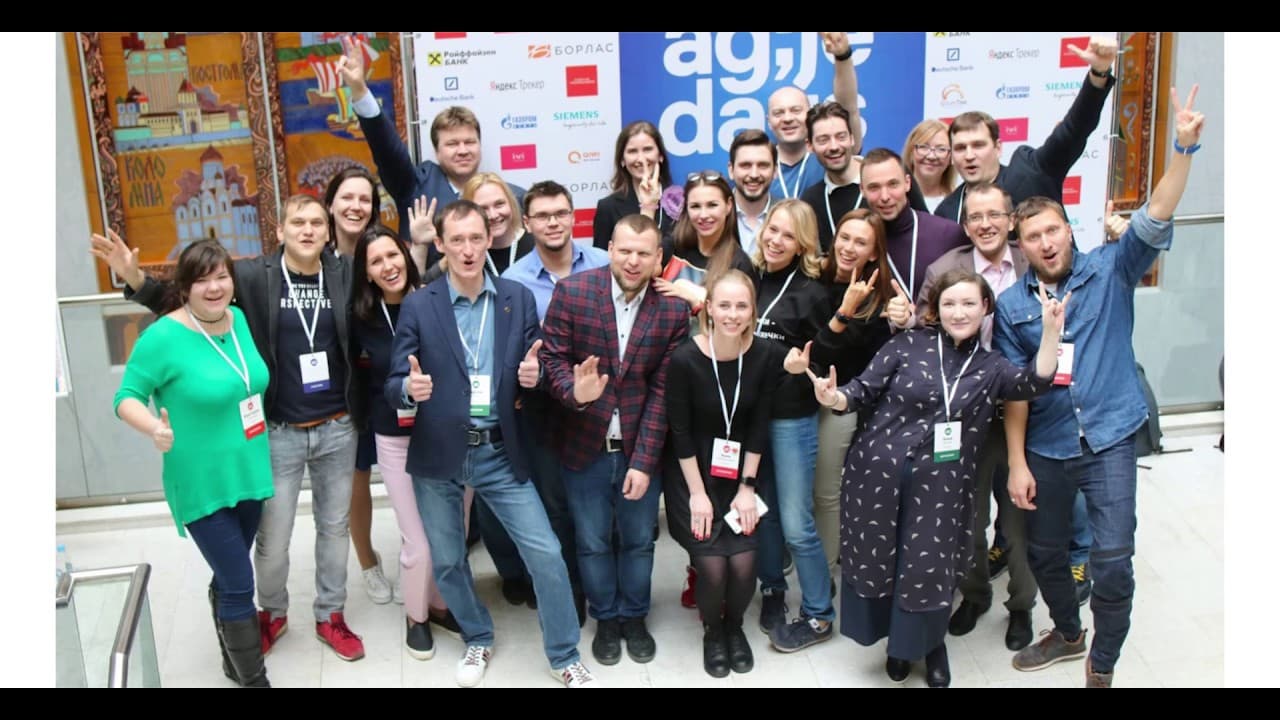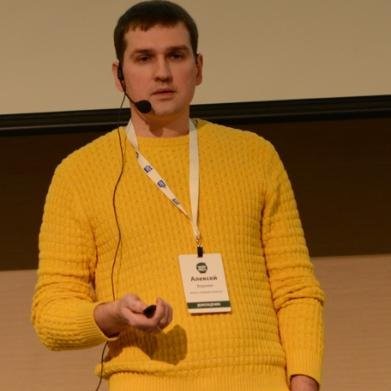I'm Alexey, and today we'll talk about open salaries, an approach that we use in ScrumTrek for managing salaries—not just for management, but for the entire organization.
Before we begin, a little story about why I'm here. In March, Zuzie came to Moscow to attend our main Agile conference, Agile Days. She visited our company and found that we have a really interesting culture and processes. She then invited me to speak at Agile Prague, and that’s why I’m here.
This will be an unusual case study. Typically, case studies showcase companies adopting modern management methods, changing their culture, structure, and so on. Today, however, we will talk about a company that helps other organizations on their transformation journeys—an Agile consulting company, ScrumTrek. We’ll explore how its processes and structure function.
About Me
I am a managing partner, Agile coach, and trainer at ScrumTrek. Additionally, I produce two of the largest Agile conferences in Russia: Agile Days and Agile Business Conference.
About ScrumTrek
ScrumTrek was established in 2007 by three people as an Agile consulting company. Today, it is the largest Agile consulting company in Russia and one of the largest in Europe. We have over 40 employees, three subsidiary companies (October Work and Play, and Rocket Zebel), and several franchisees in Russia and Kazakhstan. We even have an office in the center of Moscow, which is quite rare for Agile consulting companies, as they are usually very small, with one to five people.
We work with major clients across Russia. Initially, we primarily worked with IT companies like Yandex and Kaspersky Lab, but now we also serve large manufacturing companies like Severstal and Gazprom Neft, as well as financial and insurance companies. However, just three years ago, we were a small company with only six people. Then, we started growing rapidly, hiring 12 outstanding professionals in just three months—CTOs, high-level managers, and experienced change-makers.
The Challenge of Growth
Managing six people was straightforward, but when we expanded to 18, it became more complex. We faced important questions: How do we maintain long-term motivation for employees? How should we structure our company to create a great work environment while still driving business growth and profitability?
At the start, we had two options. The first, a traditional approach, was to create departments, hire managers, and delegate tasks. However, managing a group of highly skilled professionals would require an exceptionally expensive manager. Moreover, introducing hierarchy would slow down company dynamics and weaken our self-managing culture.
The second option was to structure our company as a network. This approach was more challenging because there were few real-world examples to follow. Nevertheless, we chose the harder path, decentralizing management by empowering employees to take ownership of the company. It was easy to say but difficult to implement.
Transparency and Open Salaries
We realized that if we wanted employees to manage the company, they needed full access to relevant information—including financial data. The most sensitive part of this was salary transparency. The risk was that revealing salaries could create tension, particularly if disparities seemed unfair.
To mitigate this, we sought case studies of companies with open salaries and found one useful example, which we used as inspiration. Our first step was to align salary expectations across the company and eliminate unfair pay gaps. We discussed the idea with all employees and got their agreement. Then, we asked each employee to fill out a spreadsheet, estimating their own salary expectations and their perception of colleagues' salaries.
The CEO aggregated this data and adjusted salaries accordingly—only increasing them, never decreasing. This ensured motivation remained high. For example, my salary nearly doubled during this process because most of my colleagues believed I was already earning twice what I actually was. After this alignment, it became much easier to make salaries fully transparent without conflict.
Implementing Open Salaries
We introduced an open salary management system using Trello. The board had columns for roles, responsibilities, employees on trial periods, and salary increase requests. Everyone in the company could see salaries, roles, and changes in real-time.
If someone wanted a salary increase, they could request it publicly on Trello, providing justification. Colleagues could then offer feedback. A salary increase was approved if more than 50% of employees voted in favor and no one opposed it. At first, this process was chaotic, but over time, it stabilized.
One challenge was that some employees were uncomfortable requesting salary increases for themselves, as they were accustomed to managers determining their pay. In such cases, colleagues often submitted requests on their behalf. Interestingly, some employees used salary requests as feedback tools, asking what they needed to improve to earn a significant increase in the future.
Initially, we had no formal salary increase criteria, leading to intense discussions. Over time, we developed a structure where raises were granted based on tangible contributions to the company and colleagues.
Expanding Transparency
Salaries were just one part of our transparency initiative. Next, we opened all financial data to employees. Initially, we sent monthly handmade financial reports detailing income, expenses, and receivables. Later, we built an automated reporting system, allowing employees to access financial information at company, business unit, and personal levels.
Decentralized Decision-Making
To further empower employees, we implemented an "advice process" for decision-making. Anyone could propose and implement initiatives, including hiring, attending conferences, or developing new products. The only restriction was that costly decisions required additional input from colleagues.
We created an "Initiatives Board" where employees publicly sought feedback before taking action. This approach significantly increased company dynamism, but it also led to mistakes. For example, we hired four employees just before a low season, nearly causing a cash flow crisis.
Rather than reverting to strict controls, we improved financial awareness by developing Slack bots that provided weekly updates on forecasts, account balances, and other key financial metrics. This allowed employees to make more informed decisions.
The Results
Today, ScrumTrek has over 40 employees and no traditional managers. We do have a CEO and CFO, but their role is to create an environment where others can thrive. In three years, only one person has left the company, which we consider a great success.
Our decentralized structure has fueled innovation. We have developed over 40 new customer products, including training programs, digital services for Agile teams, and new conferences. Some of these offerings, such as online Agile training and strategic retrospective tools, are unique to our market.
ScrumTrek has become a platform for creative professionals to build something amazing. As job mobility increases, creating a great work environment will be essential for all companies.
Finally, here is a link to the company blog that inspired our journey. Thank you.



